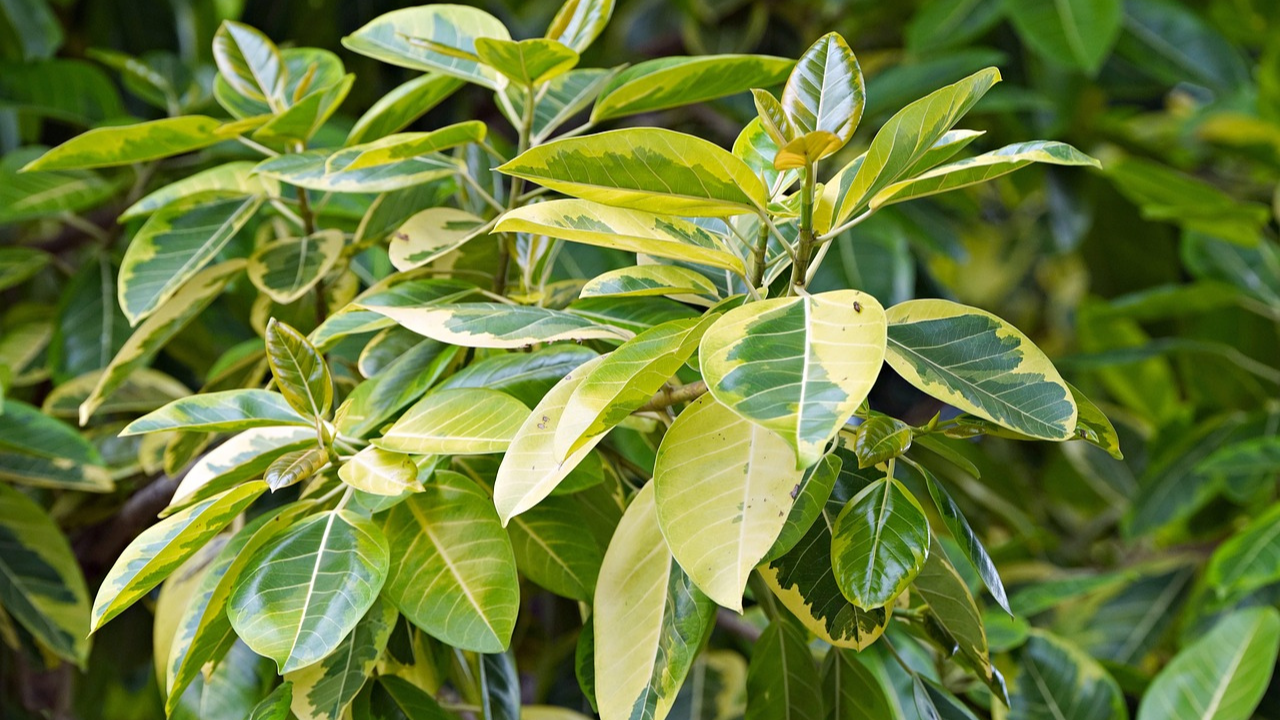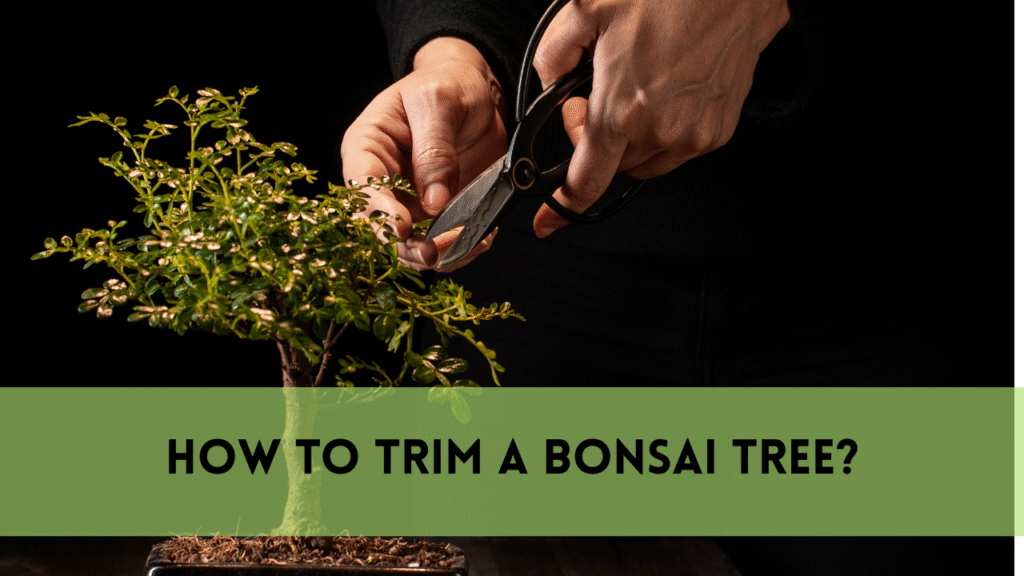Trimming a ficus tree is a crucial aspect of its care, impacting both its health and appearance. Ficus trees, belonging to the genus Ficus, encompass various species commonly used as indoor ornamental plants. Understanding the specific type of ficus tree you have is essential before proceeding with trimming. Varieties such as Ficus benjamina (Weeping Fig) or Ficus lyrata (Fiddle-leaf Fig) may require slightly different approaches due to differences in growth habits, leaf structure, and resilience to pruning. In this guide, you’ll learn hoe to trim a ficus tree.
Understanding Your Ficus Tree
Before initiating any pruning, take time to observe and understand your ficus tree. Note its growth pattern, overall health, and any specific issues such as pest infestations or diseases. Identifying the exact species of your ficus will help tailor your pruning techniques to its specific needs. For instance, some ficus trees are more resilient to heavy pruning, while others may require gentler treatment to thrive.
Tools You’ll Need
Gathering the right tools ensures you can trim a ficus tree effectively and safely:
- Pruning shears: Ideal for trimming small to medium-sized branches up to 1/2 inch in diameter.
- Loppers: Essential for cutting thicker branches up to 1 1/2 inches in diameter with greater leverage.
- Pruning saw: Used for larger branches that pruning shears or loppers cannot handle.
- Gloves: Protect hands from sap, thorns, and sharp edges.
- Safety glasses: Shield eyes from debris and small wood chips that can fly during cutting.
Each tool serves a specific purpose in the pruning process, from precision cuts with pruning shears to more substantial removals with loppers and pruning saws.
When to Trim a Ficus Tree
Timing is crucial when you to trim a ficus tree to promote optimal growth and recovery:
- Spring to Early Summer: This period marks the active growth phase for most ficus trees. Pruning during this time encourages vigorous new growth and minimizes stress on the tree.
- Avoid Fall and Winter: Pruning during these seasons can expose the ficus tree to cold damage and slow its recovery. It’s best to wait until warmer months when the tree can respond more positively to pruning.
How To Trim A Ficus Tree
Steps to Trim a Ficus Tree
- Inspect the Tree: Begin by closely examining the ficus tree for any signs of damage, disease, or overcrowded branches. Identifying problematic areas ensures you prioritize their removal during pruning.
- Start with Dead Branches: Dead or diseased branches should be your first targets for removal. Use sharp pruning shears or a pruning saw to cut these back to the nearest healthy junction or the trunk. Removing dead wood helps maintain the overall health of the tree and prevents potential sources of infection.
- Remove Diseased Branches: Branches showing signs of disease, such as discoloration, mold, or fungal growth, should be promptly removed. Cutting these out prevents the spread of disease throughout the ficus tree and encourages healthy new growth.
- Address Crossing Branches: Crossing or rubbing branches can cause wounds that weaken the tree and invite pests and diseases. Carefully assess and remove one of the crossing branches to alleviate pressure and promote better airflow within the canopy.
- Shape the Tree: Step back periodically to evaluate the ficus tree’s shape and overall appearance. Trim back branches that disrupt the desired form or size, making cuts just above a healthy bud or branch junction to encourage proper healing and new growth.
- Thin Out Excess Growth: Over time, ficus trees can become dense with foliage, limiting sunlight penetration and airflow. Thinning out some of the inner growth helps maintain a balanced canopy and promotes healthier foliage throughout the tree.
- Trim for Size and Height: If your ficus tree has outgrown its space or become too tall, prune back accordingly to manage its size and height. Maintaining a manageable size not only enhances the tree’s aesthetic appeal but also makes it easier to care for indoors or in smaller gardens.
- Final Touches: After completing the pruning process, take the time to clean and disinfect your pruning tools with rubbing alcohol. Proper tool maintenance prevents the spread of disease between plants and ensures your tools remain sharp for future use. Dispose of trimmings responsibly and perform a final inspection to ensure all necessary pruning has been completed.
Tips for Effective Pruning
- Timing and Frequency
- Prune your ficus tree during late winter or early spring to promote vigorous growth during the growing season. Avoid pruning during fall as it may stimulate new growth that can be damaged by cold temperatures.
- Tools and Equipment
- Use sharp, clean pruning shears for smaller branches and a pruning saw for thicker ones. Clean tools between cuts to prevent the spread of diseases. A pair of gloves and safety glasses are also recommended for protection.
- Identifying Branches to Prune
- Remove dead, diseased, or damaged branches first. Next, prune crossing or rubbing branches to improve airflow and reduce the risk of disease. Thin out excessive growth to maintain the tree’s shape and health.
- Pruning Techniques
- Make cuts at a slight angle just above a bud or lateral branch to encourage healthy regrowth. Avoid leaving stubs, as they can attract pests and pathogens. For larger branches, use the three-cut method to prevent bark tearing.
- Monitoring and Maintenance
- Regularly inspect your ficus tree for signs of new growth, pests, or diseases after pruning. Water and fertilize as needed to support recovery and growth. Adjust pruning frequency based on the tree’s growth rate and desired shape.
- Consulting an Expert
- If you’re unsure about how or when to prune your ficus tree, consider consulting a certified arborist or garden center. They can provide personalized advice based on your tree’s specific needs and condition.
By following these tips for effective pruning, you can ensure your ficus tree remains healthy, aesthetically pleasing, and resilient against environmental stressors throughout the year.
Common Mistakes to Avoid
- Over-Pruning: Removing too much foliage at once can stress the ficus tree and inhibit its ability to recover and grow.
- Improper Cuts: Cutting too close to the trunk or leaving stubs can lead to disease and slower healing times for the tree.
- Neglecting Safety: Pruning often involves working with sharp tools and heights. Prioritize safety precautions to prevent accidents and ensure a smooth pruning experience.
FAQs
When is the best time to trim a ficus tree?
Ficus trees should ideally be trimmed in late winter or early spring before new growth begins. This timing ensures minimal stress to the tree and promotes healthy regrowth.
How much should I trim a ficus tree?
Aim to remove no more than 20-30% of the tree’s foliage at a time. This allows the tree to recover more effectively and reduces the risk of shock.
What tools do I need to trim a ficus tree?
Basic tools include pruning shears for smaller branches and a pruning saw for thicker ones. Ensure your tools are sharp and clean to make clean cuts and prevent infections.
How do I prune overgrown branches on my ficus tree?
Identify the branch collar (swollen area where the branch meets the trunk) and make a clean cut just outside this collar. This method promotes faster healing and prevents damage to the trunk.
Can I trim a ficus tree if it’s indoors?
Yes, indoor ficus trees can be pruned similarly to outdoor ones. Use sharp, clean tools and prune in early spring to encourage healthy growth.
Conclusion
Pruning your ficus tree is a rewarding endeavor that enhances its health, appearance, and longevity. By understanding your tree’s specific needs, using the right tools, and following proper pruning techniques, you can maintain a thriving ficus tree in your home or garden. Regular pruning not only improves the tree’s structure and aesthetic value but also prevents potential issues such as disease and overcrowding. Take pride in caring for your ficus tree, and enjoy the benefits of a beautifully trimmed and healthy plant.






